As a motorcyclist, gear plays a large role in our day-to-day riding life. Not only does it provide much-needed protection from the elements and for our bodies, but it also allows us to show our personality and style as a rider. So how do we keep our gear lasting and in good shape?
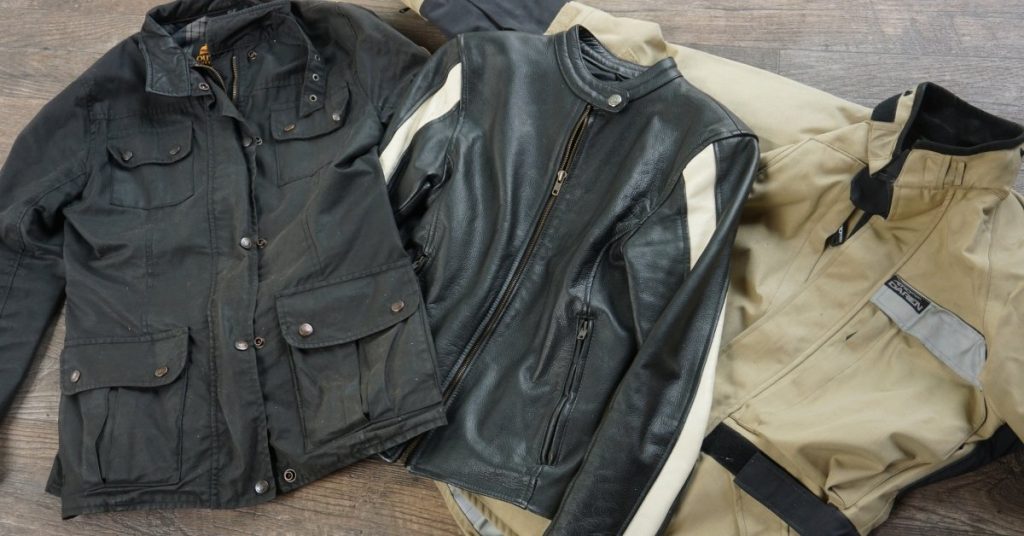
Just some of the most common motorcycle gear materials, Waxed Cotton, Leather, and Waterproof synthetic.
There are a few things to know as different materials require different care, but whether it’s leather, waxed cotton or synthetic waterproof gear here’s a few quick tips about how to keep your gear ready for adventure.
Waxed Cotton
Waxed Cotton gear is well-known for its durability and for being waterproof – not to mention its unique old-school styling. If taken care of, bulky and heavy waxed cotton can last for years. It also offers great breathability and, as previously mentioned, waterproofness, making it versatile for all types of weather.
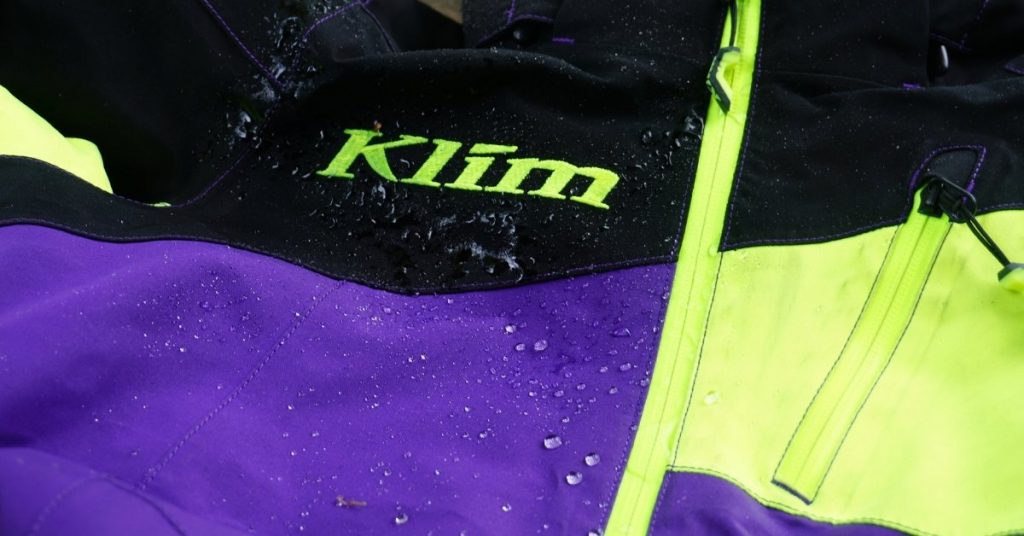
An example of water beading from the material, this shows the water-resistant coating is still intact on the suit.
If you wear a Waxed Cotton Jacket often you’ll likely want to rewax your jacket at least once a year, you can easily do this with Waterproof Wax, which you can order or find locally. Before rewaxing you’ll want to wipe down the outside fabric with a damp cloth with cold water. You want to be sure to remove any dirt from the fabric and seams.
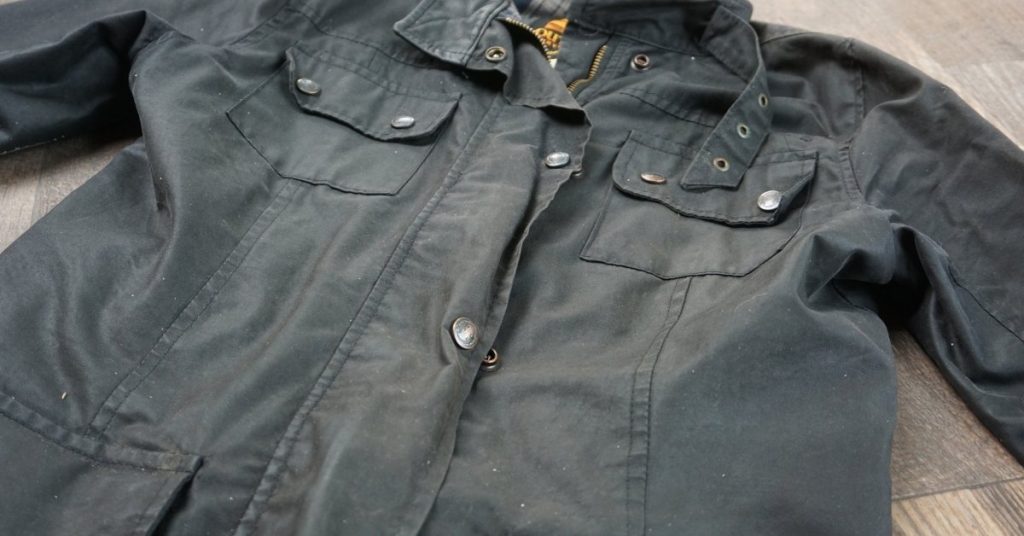
Waxed Cotton jackets tend to have an almost wet look to them. If the material is dull and feels dry it is time to rewax.
Once the jacket is dry from cleaning it, you can apply the waterproof wax. I like to do this with a rag or cloth. Be sure to apply generously, and get all flaps and seams of the jacket. Once the wax is applied you’ll need to heat it to allow the wax to permeate into the material.
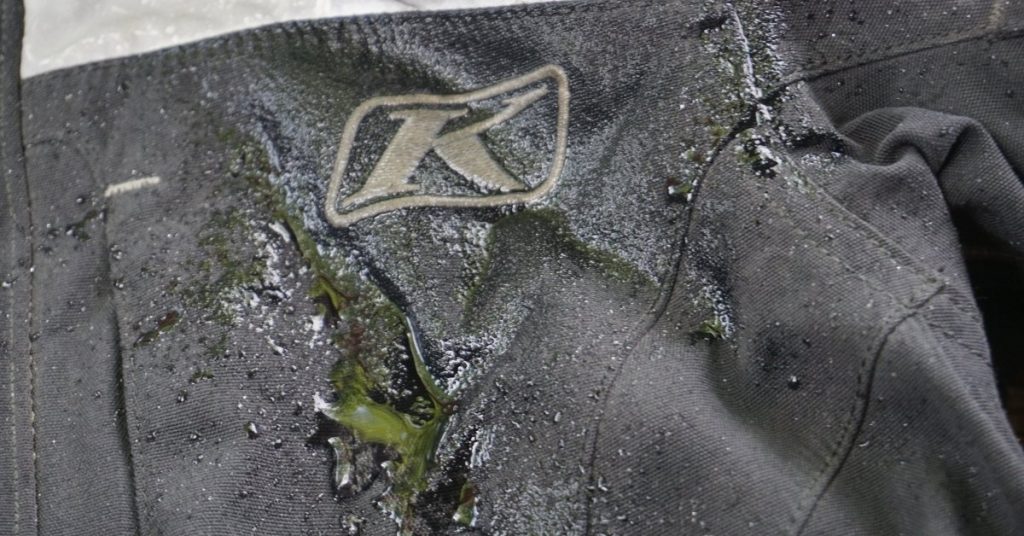
An example of what the material looks like when the water-resistant coating no longer works, you can see the water soaking into the jacket instead of rolling off.
You can do this by hanging it outside if it’s a hot day or using a hairdryer, being sure to heat all parts of the jacket. Once you’ve done this your jacket will likely be a bit darker in colour and have the look almost of suede. Be cautious as some wax may stain your pants or other fabrics in contact with the garment for a short time after it’s been rewaxed.
Leather
Leather jackets and pants hark back to the iconic history of motorcycling and offer great protection from wind and cold if taken care of properly. Leather will dry out throughout use causing cracks and general deterioration. This is especially true when introduced to harsh weather, dirt and road grime.
You can prevent its wear and keep its condition for years if you give it a little attention once in a while. Similar to waxed cotton, washing your leather jacket is not a good idea. Instead, get a cloth or sponge with warm water and wipe down the garment to get off any dirt.
After the leather has dried completely from being wiped down, apply a leather conditioner onto the jacket. I prefer a beeswax base conditioner which you can find at most shoe stores. Be sure to get all the seams and creases and rub the conditioner into the leather.
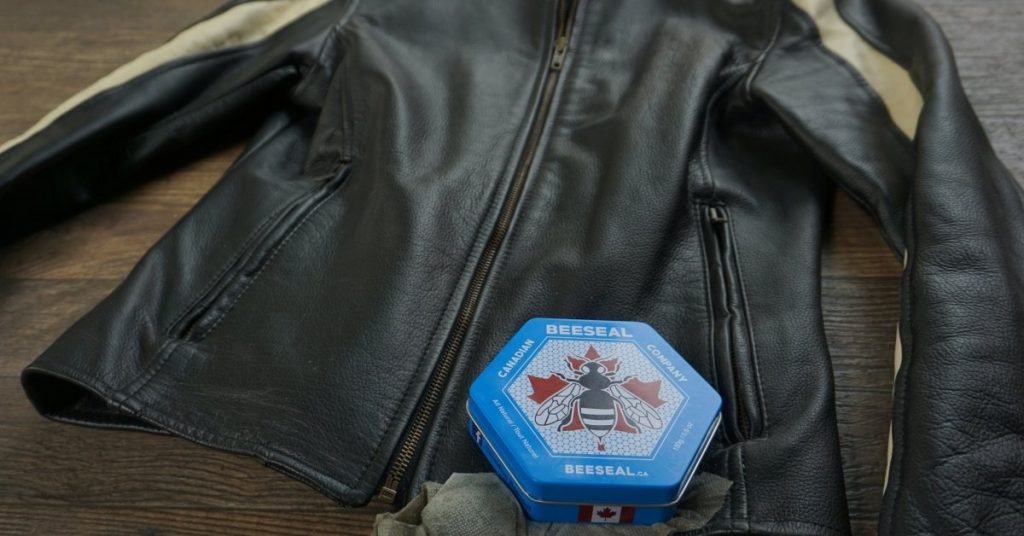
I prefer to use a Beeswax conditioner on my leather, it is the most common and offers great protection from the sun, water, and dirt.
Waterproof Membrane
Waterproof synthetic riding gear is very common these days. They’re light, breathable and offer great protection from the weather. That being said, they do require maintenance to ensure its breathability and protection.
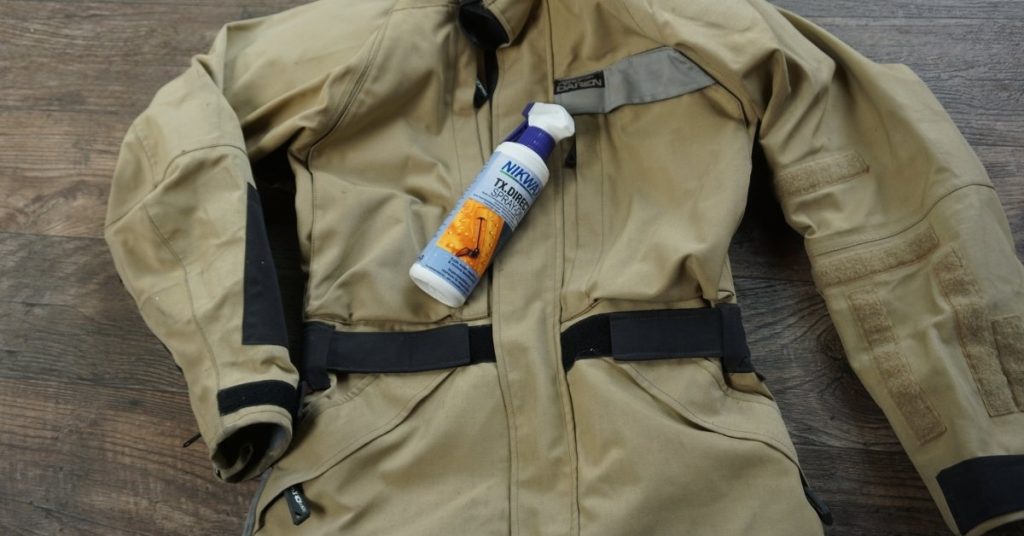
Synthetic Waterproof jackets offer great protection and easy care. Any garment with Gore-tex, Sympatex, or may be a brand specific version of a similar-type membrane.
It’s important to wash your waterproof membrane gear at least once a year, as dirt and grime will clog the pores of the gear causing bad breathability and wear down the DWR (Durable Water Resistance) coating on the outside of the jacket. Unclean material will also contribute to the waterproof membrane inside of the garment to wear down quicker.
For washing instructions always check with the manufacturer’s recommended instructions. However, general washing instructions entail a mild, liquid soap in the washing machine on a regular wash cycle. Once finished, run another regular wash cycle without soap to thoroughly rinse your gear.
Put the garment in the dryer on low heat. You’ll want to tumble dry it on LOW heat. Once the cycle is done, run the dryer again on low heat for another 20 minutes, this will revive and re-activate the DWR coating on your gear. If your gear is older the DWR coating may have worn off, you can easily reapply it once your gear is dry.
You can check the water-resistant effectiveness by dripping or spraying water on it. If the water soaks into the top layer of the fabric you’ll want to reapply an aftermarket form of DWR. Nikwax and Revivex offer a good alternative to the DWR coating in easy-to-use spray bottles.
No matter what you should take account of your gear and inspect it at least once a year. Tears in seams or worn pads or fabric can lead to a lack of protection. It’s also a good idea to see if you have gear coverage built into your motorcycle insurance policy. The goal is to stay safe while on the road, but if all else fails you want to know your motorcycle gear will protect you.
At Riders Plus Insurance, we’re here for you. For more information of our services, contact us.


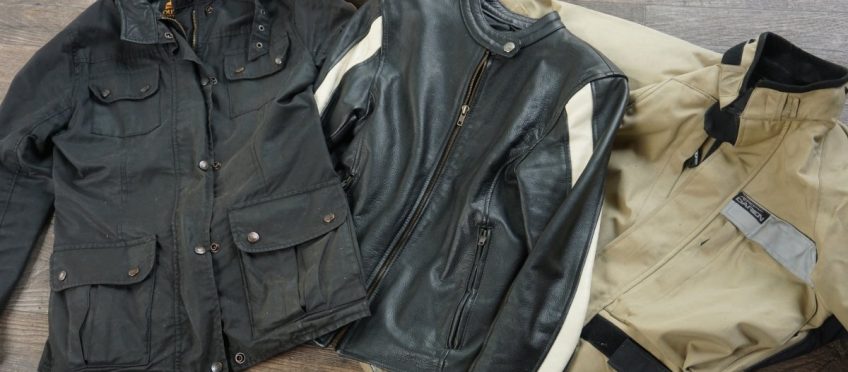




join the conversation